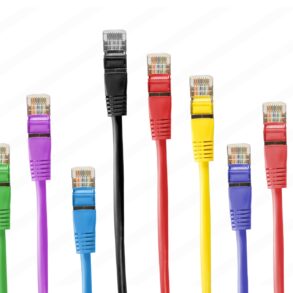Navigating the Landscape of Low Voltage Cabling
Low voltage cabling refers to a category of wiring systems designed to carry low electrical signals, typically up to 50 volts. It encompasses a wide range of applications, making it an essential component in both residential and commercial projects. Common uses include telecommunication systems, security alarms, audio/video systems, data networking, and automation solutions. The flexibility and efficiency of these systems have contributed to their growing popularity across various industries, ensuring that they meet the specific requirements of diverse environments.
Several types of low voltage systems are prevalent today. These include structured cabling, which provides a comprehensive telecommunications infrastructure; data cables such as Cat5e, Cat6, and fiber optic cables; and other specialized cabling solutions like coaxial and HDMI cables. Each type serves different functions and offers unique advantages, making it crucial for technicians and installers to understand which system is best suited to a particular application.
Moreover, low voltage cabling installations are governed by several industry standards and codes, which ensure safety and reliability. The National Electrical Code (NEC) and Telecommunications Industry Association (TIA) standards outline the best practices that technicians must follow to ensure compliant and effective installations. Adhering to these guidelines not only mitigates potential safety hazards but also enhances the longevity and performance of the cabling system.
Structured cabling, in particular, plays a significant role in modern networking by facilitating the seamless flow of data and voice communication throughout a facility. Its organized cabling infrastructure reduces clutter and simplifies troubleshooting, while also providing a modular approach for future upgrades and expansions. As low voltage cabling continues to evolve, understanding its components and best practices becomes increasingly important for industry professionals and newcomers alike.
Staying Ahead: Trends and Innovations in Network Technology
In today’s fast-evolving digital landscape, the network cabling industry is undergoing significant transformations, primarily driven by technological advancements and the increasing demand for high-speed connectivity. One of the most notable trends is the widespread adoption of fiber optics, which offers superior performance compared to traditional copper cabling. Fiber optics not only provide faster data transmission speeds but also greater bandwidth capabilities, making them essential for data centers and organizations handling large volumes of data.
As data centers continue to grow in size and complexity, the need for efficient connectivity solutions becomes paramount. High-density cabling systems are emerging as a best practice, enabling organizations to manage space effectively while ensuring optimal performance. Innovations in cabling infrastructure, such as the introduction of modular cabling systems, allow for greater flexibility and scalability, meeting the demands of increasing data traffic.
The significance of bandwidth and speed in network solutions cannot be overstated. Businesses are recognizing the need to future-proof their network installations by investing in high-speed cabling solutions that can support evolving applications and services, such as cloud computing and the Internet of Things (IoT). Keeping abreast of these trends is essential for professionals in the network cabling sector, as they set the standards for efficient and reliable network infrastructure.
To stay informed about the latest developments, industry practitioners can utilize resources such as cabling.com and industry journals that provide insights into new products and best practices. Furthermore, attending industry conferences and engaging with professional networks can enhance knowledge of current trends and innovations. Staying ahead in network technology is vital, as these advancements not only shape the future of connectivity but also impact various sectors and applications, from telecommunications to smart cities.











